Best 5 Anarkali Suits For Any Occasion

The Anarkali is an exquisite ethnic garment that has deep historical roots. The beauty of its namesake, the famous dancer at the court of Emperor Akbar who won the affections of Prince Salim, is reflected in the palace. Anarkali, which means “blossoming pomegranate,” was chosen as her name because of her extraordinary beauty.
History you should know about anarkali suits
The name Anarkali is shrouded in intrigue, tragedy, and romance. Although widely believed, this urban legend is not supported by fact or history. The narrative follows Prince Salim and Anarkali as they experience the repercussions of their forbidden love. During her time as a dancer in Emperor Akbar’s court, Anarkali favoured figure-hugging kurtas. This dress had a fitted bodice right up to the waist and a full, billowing skirt that ended just above the knee. It was paired with churidar-style trousers and a sheer stole or dupatta.
As its name implies, the Anarkali suit had long or short sleeves and a high, covered neckline. Silks, cotton muslins, brocades, velvets, and organzas were among the fabrics deployed. In the arts, the Mughals popularised the use of floral themes, block printing, kalamkari (patterns drawn with a pen), and gold thread work around precious or semi-precious stones.
The churidar and the fitting, flowing kurtas used by the dancers at the Mughal court dance became known as the Anarkali or the Anarkali salwar suit.
Furthermore, the Hindi film industry contributed to the widespread acceptance of this style of dress. The 1960 release of the classic film Mughal-e-Azam featured main actress Madhubala costumed in and as Anarkali. It remained to be a groundbreaking innovation far into the 1980s and beyond. Celebrities like Aishwarya Rai Bachan, Kareena Kapoor, and Vidya Balan have recently brought attention to this issue.
Adaptations have been made to the traditional Anarkali to reflect modern tastes. The sheer variety of patterns, embroideries, motifs, and decorations available for use in combining synthetic textiles is mind-boggling.
What Goes Into
The time needed to sew even a basic Anarkali suit can range from two to three days, depending on factors like the suit’s fabric, its cut, its embroidery, and the embellishments. Common accessories are a matching dupatta or a net stole. Fabrics and embellishments like sequins, mirrors, beads, zari, imitation pearls, and more may be purchased with relative ease, but having the garment sewn is typically more convenient. Tailors in the area are well-versed in their craft and have ready access to the materials they need. Price quotes range from Rs.800/- to Rs.1200/- for stitching. The price is set by factors like as pattern and design, which need more time and effort to produce. The price of a ready-made Anarkali might vary between Rs.2500 and Rs.15000.
Types
1. Georgette Embroidered Anarkali suits
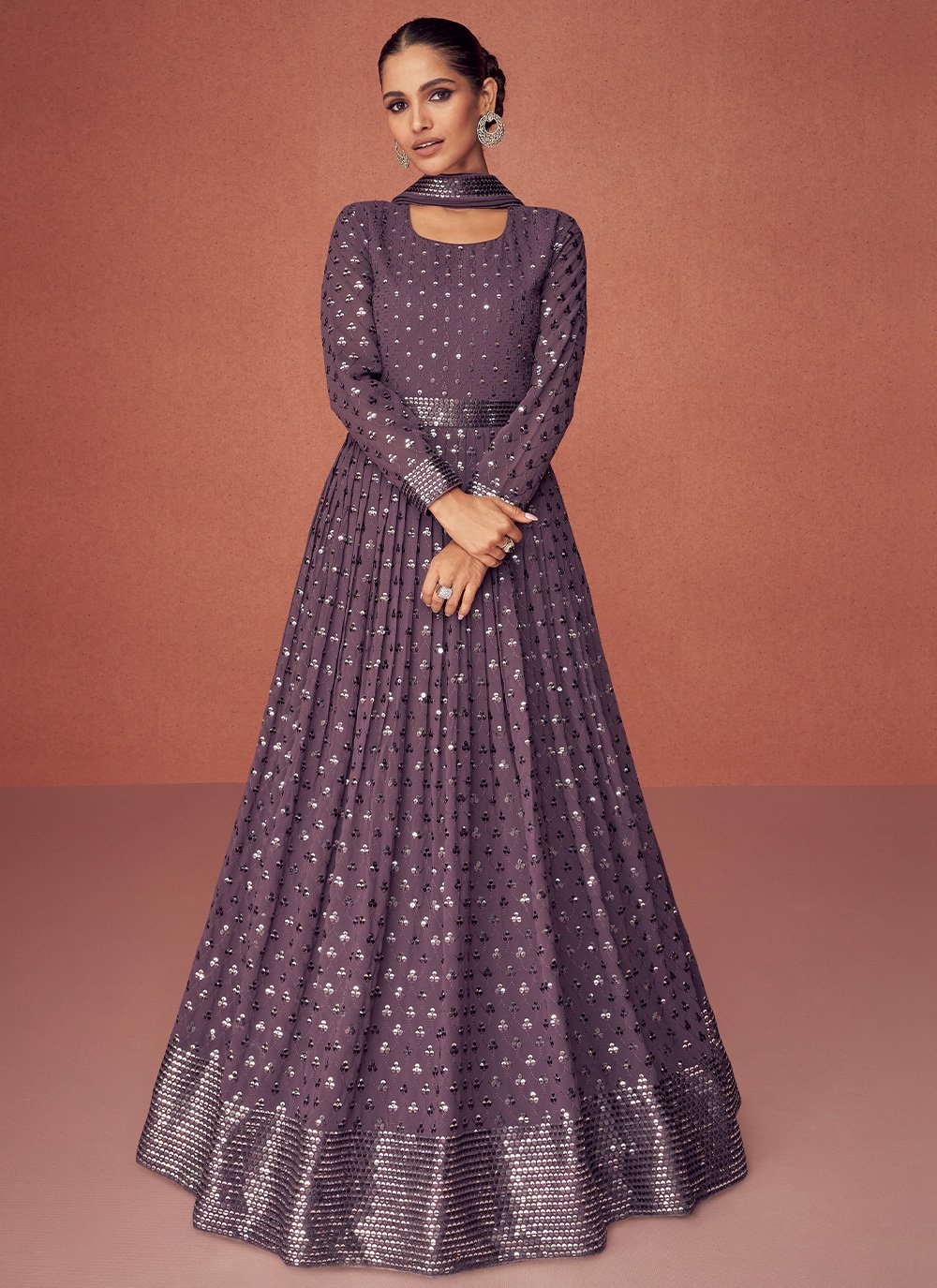
Appear stunningly lovely with this mauve georgette readymade salwar kameez. The ethnic embroidered work in the dress adds a sign of elegance statement to your look. Comes with matching bottom and dupatta.
2. Art Silk Anarkali Suits
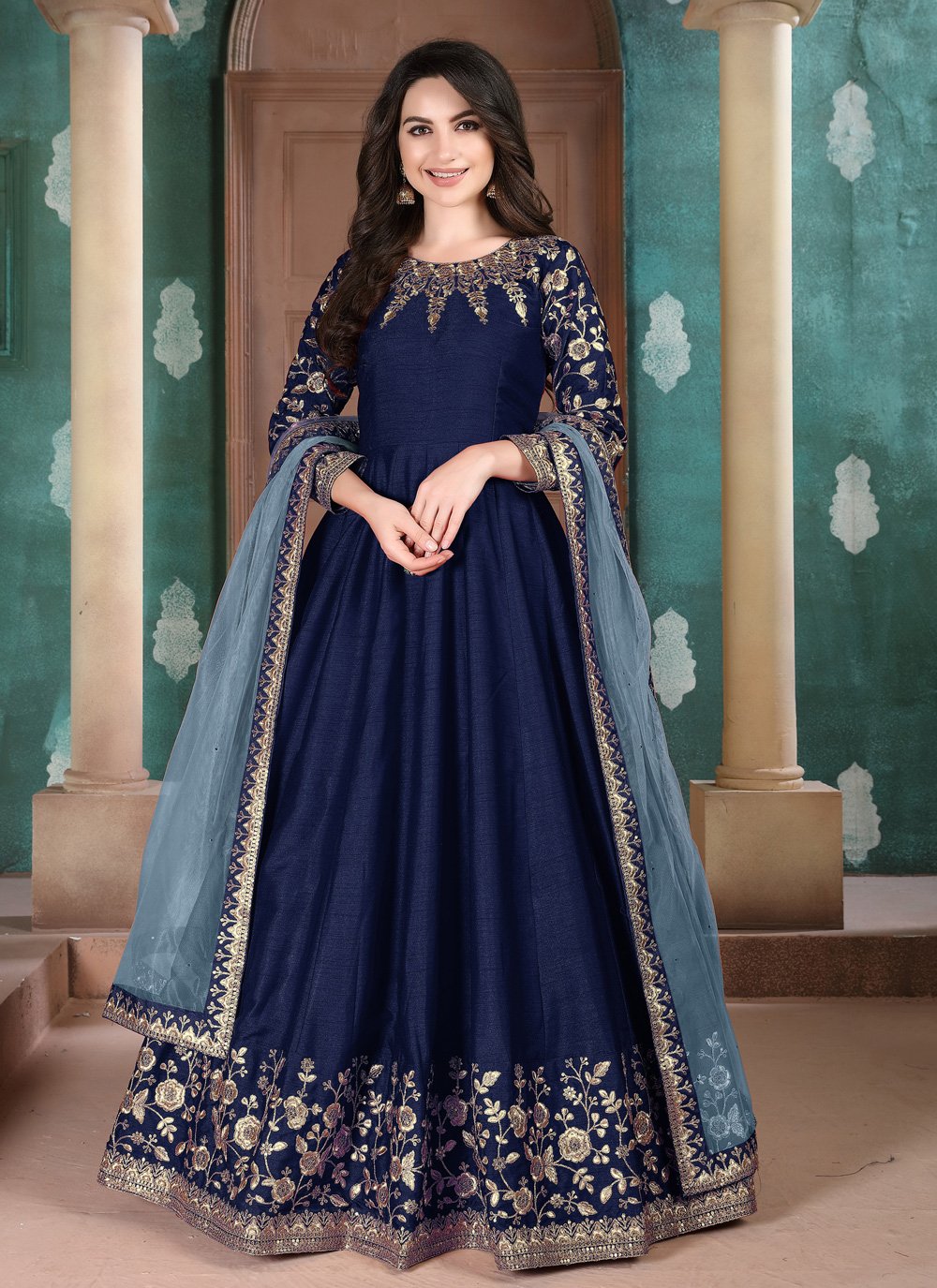
Be the dazzling diva clad in such a blue art silk anarkali suit with exquisite designs and patterns. The embroidered work appears chic and perfect for ceremonial, festival and reception. Comes with matching bottom and dupatta.
3. Chanderi Digital Print Anarkali Suits
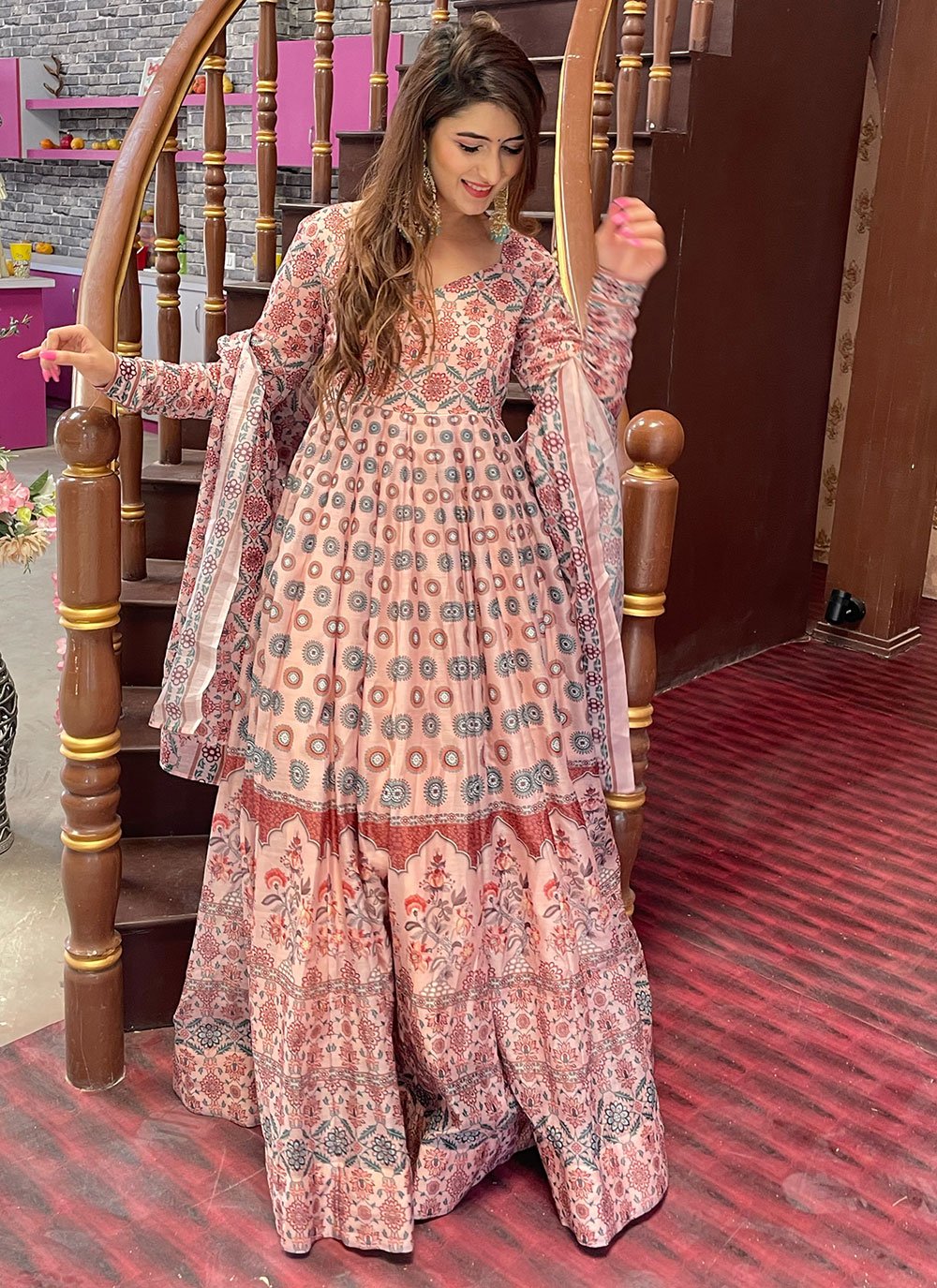
This peach chanderi floor length designer suit is accenting the gorgeous feeling. This desirable attire is displaying some extraordinary embroidery done with digital print work. Comes with matching bottom and dupatta.
4. Net Anarkali Suits
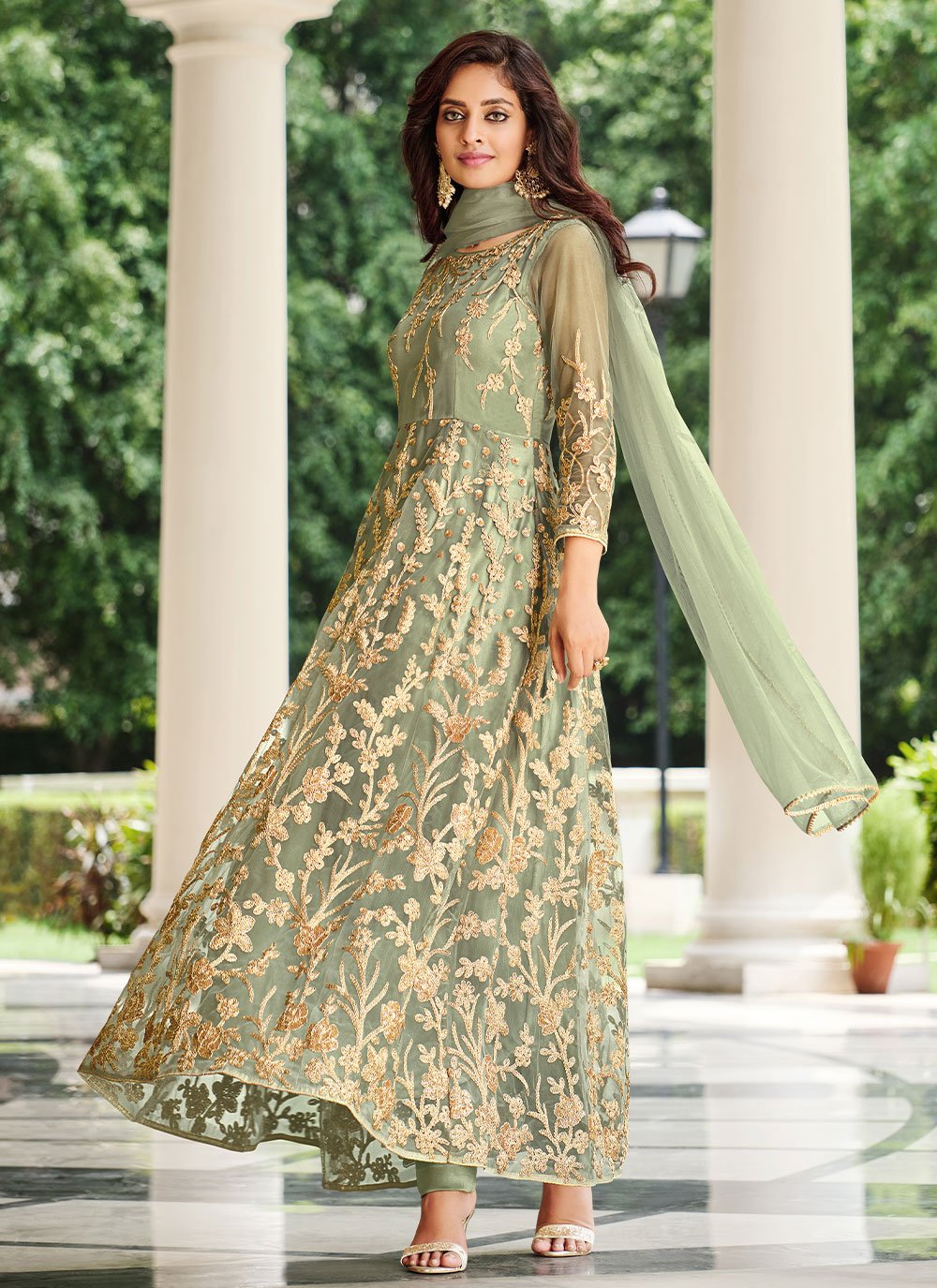
Make the heads flip the moment you dress up in this sort of a attractive green net trendy salwar suit. The enticing embroidered and sequins work a vital attribute of this attire. Comes with matching bottom and dupatta.
5. Velvet Anarkali Suits
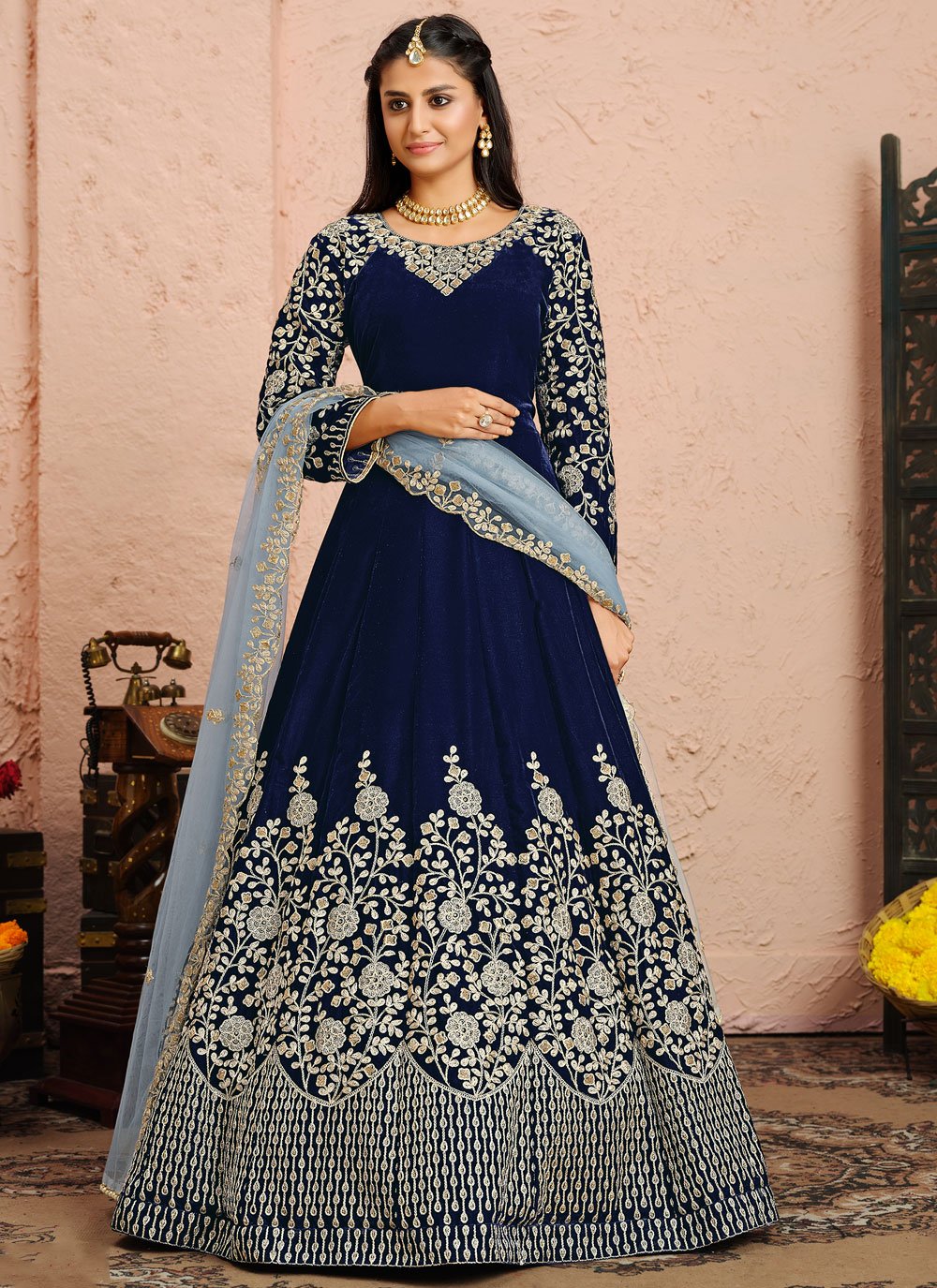
Appear stunningly gorgeous with this blue velvet anarkali salwar kameez. The incredible attire creates a dramatic canvas with extraordinary embroidered and resham work. Comes with matching bottom and dupatta.
It exemplifies how Indian cultural clothing is evolving to reflect global design. Synthetic textiles are being blended with more conventional materials like silks, brocades, and cottons. Magenta, gold, silver, and dark green are regarded fashionable, as are printed borders, embroidered zardosi motifs with flowery backgrounds, and Chinese collars. The bridal Anarkali is in high demand all around the world.
Clothing and Fashion
Textiles like chiffon, lace, and lace overlays, as well as more delicate fabrics like net and viscose, are available. Applique, Phool Patti, Bagh, Chikankari, Kashmiri kashida, Soof, Gota, Ahir, Kantha stitch, Kathiawari, Kutchhi, Badla, Mirror work, patchwork, and a plethora of other embroidery techniques. The Anarkali features unusual colour palette. Mixed in among the more standard hues are ones with unexpected undertones, such salmon, ochre, teal, and fuchsia.
One striking feature of these outfits is the utilisation of clashing colours. The embroidery at the neck and cuffs may make these tops seem either plain or elaborate. The waist, the neckline, and even the flares themselves may be adorned with lace or Gota work for a dramatic impact. The Anarkali may be dressed up or down depending on whether or not it features heavy decoration or embroidery on solid colours, or whether or not it features delicate designs or patterns. The outfit is a synthesis of traditional Mughal elements with contemporary Western style.
New Trends About Anarkali dress
These days, it’s all about patchwork front bodices, ruched bustiers, and decorative front ties. Fabrics like chiffon or net are sewn on top of a suit made of brocade or crepe. It’s currently on-trend to wear the churidar in opposition to an Anarkali. The trend right now is for low backs and high necklines.
Accessorizing
Depending on the event and the suit’s design, the Anarkali can be worn with either elaborate or simple accessories. Light jewellery is appropriate for a lavishly adorned outfit that is sure to attract attention.
Maintenance
Regular dry cleaning and avoiding direct sunlight are necessities for this outfit. If you must iron, try to do so indirectly. A summertime Anarkali can be made from cottons, chiffon, nets, or a mix of these textiles. For cooler weather, use a brocade or silk.
Conclusion:
The Anarkali suit is extremely versatile and can be worn for any occasion. With these styling tips in mind, you’ll be sure to stand out no matter where you go. So put on your favorite Anarkali suit and get ready to make heads turn!

